Spotlight Story
Historic bash for Natural History Museum
May 30, 2013
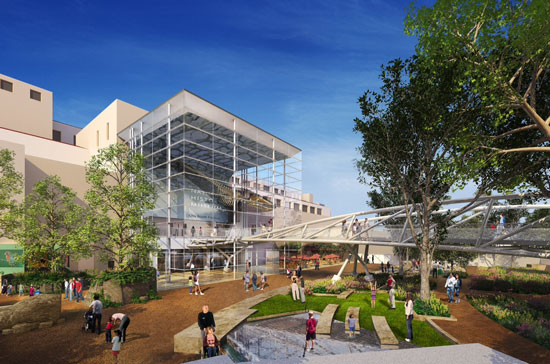
An artist's rendering of the Natural History Museum's new entry, with a fin whale skeleton suspended above.
Los Angeles was a hard-partying hick town when top-hatted civic leaders opened its first museum, toasting it with water from the then-day-old Los Angeles Aqueduct. The fairground where the new landmark stood had been a nest of saloons and gamblers. L.A. was so culturally young that, for its first acquisition, the museum touted a goldfinch nest from the San Gabriel River bottom.
But a century can make such a difference.
On June 9, the Natural History Museum of Los Angeles County will kick off its centennial with a day and night of hoopla in the rowdy ex-fairground that is now called Exposition Park. The festivities—with kid-friendly activities, food trucks, garden tours, live music, scientists and a nighttime concert by DEVO—will not only honor one of the nation’s largest and best-known natural history museums, but also will mark a milestone in the decade-long renovation and restoration.
The museum’s hallmark 65-foot fin whale will welcome guests from the top of a dramatic new glass entrance. Two Expo Line Metro stops will ferry visitors who prefer to arrive via L.A.’s burgeoning mass transit system.
A 3.5-acre Nature Garden will blossom outside a companion, state-of-the-art Nature Lab, where visitors can study wildlife, see it in action and then collaborate with science lovers region-wide in crowdsourced “citizen science” projects. Nearby, the museum’s acclaimed new Dinosaur Hall and award-winning Age of Mammals exhibits, both already opened, will be joined in July with the unveiling of the renovation’s final piece, “Becoming Los Angeles,” a permanent installation on the development of Southern California.
Meanwhile, visitors will be able to get a local history fix in the halls and rotunda of the 1913 building, which is on the National Register of Historic Places, and which has been restored and seismically strengthened.
“If you haven’t visited the Natural History Museum in a while, you should be prepared to find a vastly different institution,” says President and Director Jane Pisano. “This is a museum that has transformed itself.”
Pisano says the remodel arose from a change of philosophy at the museum.
“The old philosophy was very typical of natural history museums everywhere,” she says. “It was all about us—how we do research, how we take care of collections—and we changed that mission to focus on the visitor.”
The new aim, she says, is not to be “a book on a wall,” but to inspire wonder and a sense of discovery and responsibility in those who come to the museum. “We were doing a good job on wonder, but not so well on discovery and least well on inspiring a sense of responsibility for the natural world.”
Nor, she says, was the museum working as well as it could with Southern California’s natural landscape.
“There are very few cities that have the kind of climate we have,” she noted. So with the help of a new, county-funded garage that has consolidated parking, acres of paved land were transformed into wildlife habitat and gardens. Meanwhile, the building’s grand architecture was tweaked to create an easier flow between indoor and outdoor wonders.
Now visitors can take in the museum’s longstanding highlights—the dinosaur bones, the marine fossils—but also enjoy workshops led by master gardeners in the edible garden and unleash their kids in a “Get Dirty Zone.” The remodel also has set the stage for a long-term “citizen science” study of local biodiversity that museum experts expect to stretch throughout the Los Angeles Basin.
“This is a place where living things will come in and we can appreciate them in the wild,” says Karen Wise, the museum’s vice president of education and exhibits. “We don’t have to just have dead things on display.”
The new Natural History Museum isn’t the only cultural institution in Southern California to be reimagining the museum experience ways that are more authentic to L.A. The Los Angeles County Museum of Art under Director Michael Govan also has taken a more indoor-outdoor approach with installations such as Michael Heizer’s “Levitated Mass” and Chris Burden’s “Urban Light” on its campus. In fact, on the same day as the Natural History Museum celebration, LACMA will unveil a proposed architectural remodel that would make the county’s 50-year-old art museum literally transparent to visitors.
“I love letting the light in,” says Pisano. “I think it changes everything about the museum. I love that it’s fun, and I love that it has become a destination where visitors of all ages can come and spend the day and still not see it all.”
And, she says, there’ll be more to love as the next century gets underway at the museum. Pisano says the renovation has upgraded about 60 percent of the public space on the campus, with plenty of projects on the horizon.
“We need to redo the auditorium,” she says. “There still are exhibit galleries that need to be re-presented. We need to redo our Gem and Mineral Hall. We’ve talked about a Hall of the Americas for a long time.
“There’s a lot to be done,” says the museum director, “but I’m so optimistic about the future of this place.”
Posted 5/29/13
Score two for mental health
May 14, 2013
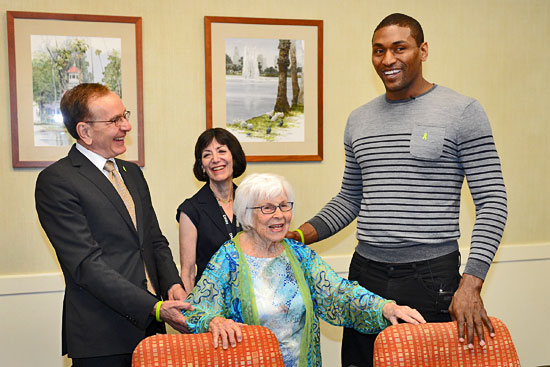
Mutual fans: Stella March, center, with Laker star Metta World Peace. At left, county mental health director Marvin Southard and chief deputy Robin Kay. Photo/Los Angeles County
“How’s Kobe doing?”
The question came from 97-year-old Stella March, a stalwart Lakers fan for decades. And it was directed at someone she thought would know—Kobe Bryant’s teammate, Metta World Peace.
“He tried to fight through it, but he couldn’t,” Metta said of Bryant and the Achilles tendon he tore on the eve of this year’s NBA playoffs. “He’s doing better now,” he assured March.
“I felt badly for him,” she said softly.
Then March turned the conversation toward Metta—and her observations had nothing to do with hoops. “What you’re doing for the kids, it’s very meaningful,” she told him. As they talked, they held hands.
From outward appearances, these two—the tiny white-haired woman with the walker and the towering player with the muscular arms—might seem like an odd pairing for a meeting of the Board of Supervisors. But as both would be quick to tell you, you can’t judge what’s inside from the outside. For they share a mission that transcends their cultural and generational divide; both are committed to destigmatizing mental health problems and treatment. And in that respect, both are very much on their game.
March and MWP, as the former Ron Artest likes to be called, were honored Tuesday by the board to kick-off “Mental Health Awareness Month.”
March is widely recognized as one of the nation’s preeminent advocates for families whose lives have been touched by mental illness, a crusade she began in the late 1970s after her son, a UCLA student, was diagnosed with schizophrenia. Among other things, her efforts led to greater government and pharmaceutical research, ultimately helping to produce a new generation of medications. She also was the driving force behind building the National Alliance on Mental Illness and initiating its “StigmaBusters” program to combat inaccurate representations of mental illness in film, television, print and other media.
In those early years, she says, mental health treatment and research was so bad that many serious sufferers “were wandering around on the streets with nowhere to go. They were shunned and stigmatized as dirty street people.” With her organization’s help and support, she says, many of the severely afflicted “learned the basic skill of telling people how they recovered. Each one had a different story of recovery. It was fantastic.”
Metta World Peace understands the power of that message. Ever since he made headlines by thanking his therapist on network television after the Laker’s 7th-game championship victory in 2010, the once-troubled player has openly talked about his counseling for anger and family issues. In December of that year, he teamed up with the Los Angeles County Department of Mental Health to produce a public service announcement aimed at encouraging young people to seek help. “Talk to somebody about it,” he says in the PSA. “I did. Take the first steps. Be a champion.”
Since then, he’s also made his pitch during high school assemblies here and across the country and has created a website called Limelight that promotes mental health treatment. A new public service announcement campaign between Metta World Peace and the county—called “Talk it Out”—was launched earlier this month and will continue throughout May.
Before their Tuesday appearance before the Board of Supervisors, March, a fan of MWP’s moves on and off the court, asked to meet him in a small conference room behind the board’s dais, where he was signing posters for the new campaign. Helped into the room by her daughter, Joella, and officials from the mental health department, March was greeted by the 6-foot-7 player with an embrace, as though she were the star. He then took a seat beside her so she wouldn’t have to strain looking up at him.
“Thank you for what you’ve done to help,” she told him. “We’ve got to keep advocating for people.”
She needn’t worry. As Metta World Peace told the audience in the board’s hearing room: “This is a lifetime work.”
Posted 5/14/13
Undercover shoppers ring up retailers
May 9, 2013
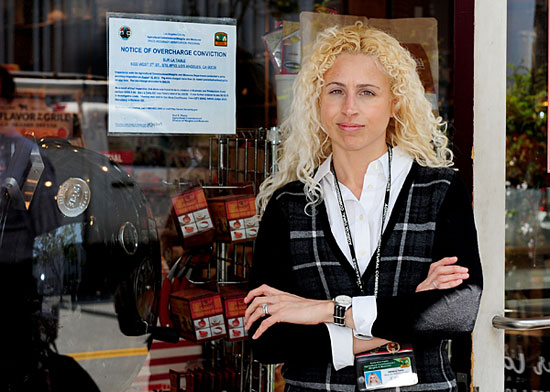
“Buyer Beware” supervisor Katherine Takata outside a Sur La Table store at The Grove that overcharged.
“Men’s Shorts Now $49.50.” The sign at the J. Crew was clear. But when the knee-length summer pants were rung up last year on a Tuesday morning, the scanner read $64.50.
It was a costly mistake—for the merchant. The “shopper” was an inspector from the county’s “Buyer Beware” program, and the $15 error, along with a mistake in the store’s favor on a pair of T-shirts, added up to a misdemeanor. Now, more than $3,200 in fines and investigative costs later, Mother’s Day bargain hunters will find a different eye-catching sign in that J. Crew, in Glendale’s Americana at Brand shopping center.
“Notice of Overcharge Conviction,” it says.
Signed by the county’s Agricultural Commissioner/Director of Weights and Measures, the 8½-by-11-inch notices have quietly become a part of L.A.’s shopping landscape in the decade since the county first began mandating their display.
Today, the county has 16 full-time inspectors working on price verification, funded by some $2 million a year in fees, says Deputy Sealer of Weights and Measures Katherine Takata, who oversees the program. Inspectors have found overcharges everywhere from supermarkets and drug stores to the handbag department of the Beverly Hills Neiman Marcus, where, in late 2011, scanners were caught charging $990 for a Prada handbag that was supposed to be on sale for $910.
Some inspectors visit retailers as anonymous shoppers or respond to consumer complaints; others show up unannounced and conduct annual spot checks.
Diplomacy also is part of the job for the inspectors, who, like traffic cops, never know what they’ll encounter.
“People cry,” Takata says. “People get angry. We’ve had people try to hug us if they pass the inspection. Someone fainted once when the inspector identified herself. Another time, an inspector asked a store manager in the Beverly Center for an ID and the man excused himself and came back a half-hour later, all sweaty—he’d run all the way back to his house to get it.”
The job does have its entertaining moments.
“We’ve had celebrity sightings,” she says. “We’ve been in store parking lots during shootings. One of our inspectors was at a Victoria’s Secret once, checking prices, and one of the clerks asked him if he wanted a changing room.” Two inspectors once foiled a robbery at a Rite-Aid by blocking the exits, she says, and several undercover inspectors have themselves been mistaken for shoplifters.
When the inspections pay off, however, they can yield serious victories for consumers. Early this year, for instance, the legwork of L.A. County inspectors helped win a multi-county, $875,370 ruling against Best Buy. As part of the settlement, the retailer has to give California customers a $3 discount if they discover any more erroneous charges.
“Most overcharges occur because of human error—things like expired price tags not being taken down or updated in the system,” Takata says. “Sometimes it’s just a regularly priced item sitting on their shelf, and you bring it to the cash register and it rings up incorrectly. Sometimes it’s clearance items that haven’t been marked properly in the system.”
Innocent as the errors may be, however—the store manager at the J. Crew cited a computer malfunction when a routine spot check turned up those overcharges—the state holds retailers responsible for the accuracy of their prices. State law forbids merchants to charge more than the lowest price advertised.
Overcharges of less than $1 are infractions, carrying fines of up to $100 per violation, but overcharges of more than $1 can be prosecuted as misdemeanors, with penalties of up to $1,000 per violation.
“It may seem like a small thing,” says Takata. “But for, say, a retiree on a fixed income, even a dollar is significant. And for big companies like Ralph’s or Best Buy, these fines are a drop in the bucket. These overcharges add up. When Macy’s overcharges by dollar for a tie, it isn’t just that one tie and that one dollar. It’s all the people who buy that tie at Macy’s.”
Last year, she says, the program collected nearly $271,000 in fines from misdemeanor prosecutions, nearly $67,000 for investigative costs and nearly $99,000 in civil administrative penalties. At the moment, she says, notices are fluttering from the doorways of about 80 retailers across the county.
Over the years, Takata adds, those signs have been a special source of consternation for some merchants, who complain that they deter business. Because they are specifically written into the county ordinance that created Buyer Beware, however, businesses must display them.
“We try to work with people, but there’s not a lot of wiggle room,” she says.
The county’s overcharge notices, required by law to hang within five feet of a retailer’s front door for 60 days after a conviction, were conceived in an effort to ensure accurate pricing after Supervisor Gloria Molina complained about overcharges at a Macy’s and a Kmart during the 2001 holiday shopping season. At the time, only one full-time inspector had been assigned to monitor pricing accuracy at the more than 10,000 merchants who do business here.
A subsequent investigation found overcharges at two-thirds of 108 retailers sampled around the county, and that spawned the Buyer Beware program, which requires stores to register price scanners and pay a fee that, in turn, underwrites the scanner inspection program. The blue-and-white overcharge notices—variously regarded as something between a restaurant grade and a scarlet letter—were added at the end of a yearlong grace period after the inspections were launched in 2002.
ACWM spokesman Ken Pellman compares the signs to speeding tickets. “The enforcement prevents larger problems and keeps things orderly,” he says. Like speeding tickets, he adds, they have also worked well as a deterrent. Last year, only about 17 percent of the 8,459 retailers inspected were caught overcharging.
Overcharging, he says, “is still unfortunately a common problem, but it’s less common than it used to be.”
Posted 5/9/13
Of broomsticks and bikes
April 23, 2013
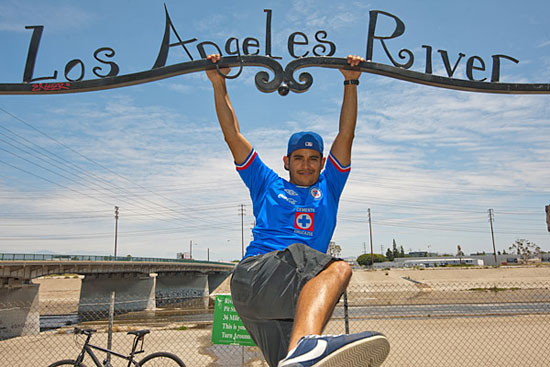
Thanks to a multi-million dollar infusion from NBCUniversal, L.A. River cyclists have something to cheer about.
With a promise of transforming Los Angeles tourism, The Wizarding World of Harry Potter is coming to Universal Studios as part of the company’s $1.6 billion expansion of its theme park and backlot. But there’s another attraction coming, too—with a constituency as fanatical as any Hogwarts crowd.
In a deal pushed and brokered by Los Angeles County Supervisor Zev Yaroslavsky, NBCUniversal has agreed to put $13.5 million into an effort to revitalize the Los Angeles River and complete a miles-long stretch of the river bikeway. And while the price-tag may seem small compared to the giant numbers behind the Potter venture and backlot expansion, it promises to be just as transformative in the worlds of alternative transportation and river restoration.
“It’s huge,” said Eric Bruins, planning and policy director for the Los Angeles County Bicycle Coalition. The development of the Los Angeles River and bikeway, he said, “creates a place where families can go and step away from the city while still being close to home.”
The recreational and commuting potential of the existing Los Angeles River Bikeway has been undermined by a nearly 6.5 mile gap between Griffith Park and Studio City. In negotiating a development agreement with NBCUniversal, Yaroslavsky pushed the company to focus its “community benefits” efforts on completing that vital stretch of the bikeway—despite the entertainment conglomerate’s earlier resistance to the idea.
“This project presented a singular opportunity to ultimately create a seamless bikeway from Long Beach to the San Fernando Valley,” Yaroslavsky said Tuesday prior to the board’s unanimous endorsement of the company’s “evolution plan.” “A big gap in this dream was the segment adjacent to NBCUniversal. Both the county and NBCUniversal seized the opportunity to solve this problem. Thanks to all involved, we can now look forward to planning and constructing the next generation of bikeway for our region.”
NBCUniversal has agreed to provide Los Angeles County with funding to fully complete an initial leg of the bikeway between Griffith Park and Lankershim and Barham boulevards, near the Universal Studios backlot. The remaining amount of the $13.5 million would then be used for the planning, regulatory and construction needs for the remaining stretch to Whitsett Avenue in Studio City. The company also has agreed to build a nearly 1-acre trailhead park along the river.
Among the groups who’ve long pushed for the expanded bikeway was Friends of the Los Angeles River. Its founder and president, Lewis MacAdams, applauded NBCUniversal’s “unprecedented generosity.” The cooperation between Universal and the environmental community, he said, “has set a very high bar for the rest of the media companies that line the banks of the river’s ‘Studio Stretch’ in the years to come.”
The Los Angeles River Revitalization Corp. also was instrumental in the public-private coalition that led to the unprecedented funding by the studio, which has been located along the concrete-sided waterway since Hollywood’s earliest days of filmmaking. The non-profit organization’s executive director, Omar Brownson, called the proposed bikeway extension the “cornerstone for the connectivity for all 51 miles of the L.A. River.”
But just as important, he said, the entertainment company’s involvement also sends a powerful message about “how we see and invest in our river. For a long time, it was looked at as a liability. Now people are looking at it as an asset.”
Posted 4/23/13
Venice welcomes CicLAvia—warily
April 18, 2013

A lone bike along the Venice boardwalk is certain to have plenty of company come Sunday's CicLAvia to the sea.
Danny Farahirad predicts Sunday’s CicLAvia will be “awesome.” The last time the cycling extravaganza took to the streets of Los Angeles, his family-owned Downtown L.A. Bicycles fixed more than 150 flat tires and rented about 40 bikes in a single day.
But Farahirad is in the central city, where the car-free event has been a rousing success for three years now. Less optimistic is Hyun Dong, who manages a t-shirt stand at the end of this weekend’s new route, on the Venice Boardwalk.
“Bicycles? Bad for business,” Dong sighs, mulling his customer-less shop from behind the cash register on a recent weekday. “Just like the events with the joggers. No one buys anything.”
As L.A.’s favorite car-free movable party ventures out of the city core on its first-ever push to the ocean from Downtown Los Angeles, a mixture of excitement and apprehension awaits on the city’s populous Westside. (Click here for a map.)
As many as 200,000 people are expected to participate in the event, which promises to be the biggest, longest CicLAvia so far; more than 15 miles of asphalt will close to motor vehicles from 10 a.m. to 3 p.m. to make way for a free-flowing crowd of cyclists, walkers, skaters, wheelchair riders, skateboarders and others.
Advance word of the event has been accompanied by high hopes that its street-fair atmosphere will continue to travel with it, but there also have been scattered concerns that it could deter sales and jam traffic in one of the densest areas of the city. Complicating the picture are lingering jitters from this week’s Boston Marathon bombing.
“There are nuts out there who are intent on hurting people,” worries Venice resident Linda Kadi, “and after what just happened, it’s scary to think about having a huge bunch of people here in one place.”
CicLAvia organizers say they expected Westside merchants and residents to need some reassurance, and that they have been doing outreach in the community for several months.
“It’s a new route,” says volunteer coordinator Martin Lopez-Iu of the Los Angeles County Bicycle Coalition. “We’ve never done this before, so some of the reactions have been kind of confused. When people in L.A. hear that you’re closing streets and taking away parking, it’s easy for them to think, ‘Oh, my God, you’re taking away business.’ But when people slow down, they’re actually more inclined to stop into their local coffee shop or restaurant.”
He notes that most communities are welcoming the excitement. For example, in Culver City, where the first phase of the new Expo Line ends, the Chamber of Commerce and Downtown Business Association have co-sponsored one of several “hubs” where participants can gather.
But at the end of Venice Boulevard, where the route empties into a parking lot abutting the Venice Boardwalk, shopkeepers predict that CicLAvia will draw foot traffic away from their wares on the weekend, when they make most of their sales.
“That’s gonna be a loss of fund-age, absolutely,” predicted a clerk selling glass pipes next to a marijuana dispensary who would identify himself only by his first name, Gary.
“And business has been slow already,” chimed in a neighboring jewelry merchant. “Even spring break came and went and I didn’t even notice. It was our worst spring break in 25 years.”
Lopez-Iu notes that Venice Boulevard is a popular attraction in its own right, and says CicLAvia organizers have worked with businesses before to overcome such worries. In 2011, for instance, merchants in the downtown garment and piñata districts complained that CicLAvia street closures would disrupt business on their busiest weekend day.
“Those guys do a lot of business on Sunday, and it requires people to come in in cars, and the first time we did the event there, they had a lot to say about it,” says Lopez-Iu. “So the next time, we worked with them. Some of them built bike-shaped piñatas that we promoted on our website. And we listed all the businesses there, and the fun things to do there. And they got a ton of business, because 100,000 new people had just found out where they could get piñatas and wholesale fabric in L.A.”
Organizers say that street closures will be less onerous than they might seem. For example, although much of Venice Boulevard will be taken over by CicLAvia, it will only be closed to motor vehicles on one side of the divider, and cars and trucks will be able to cut across the route in more than 30 places.
“The south side of Venice, from Crenshaw Boulevard west, will still be open to eastbound traffic,” says Lopez-Iu. “This isn’t going to bisect the city like with the marathon.”
He also notes that security will be ramped up in the wake of Monday’s bombing, not only for CicLAvia, but also for the Los Angeles Times Festival of Books and other events that are expected to draw crowds over the weekend. In fact, he says, so many deputies and police officers are being deployed that he’s had to muster extra yellow-shirted CicLAvia volunteers to prevent crowds from feeling intimidated.
“I try to balance the police presence with volunteer presence, to put out a friendlier face,” he says.
Meanwhile, CicLAvia fans are eagerly anticipating Sunday’s big ride—even if the event hits close to home. (For FAQs, click here.)
“I will be riding the entire length of it and getting all my friends to come,” vows John Kurtz, walking his dog, Delilah, outside their Venice Beach apartment. “I wish they would do it every weekend. It lessens the impact of the car culture and opens the streets up to people, and lets people know that they don’t have to drive everywhere, that the things they need are right in their neighborhood, a short bike ride away.”
Posted 4/18/13
Next stop? A milestone in public art
April 11, 2013
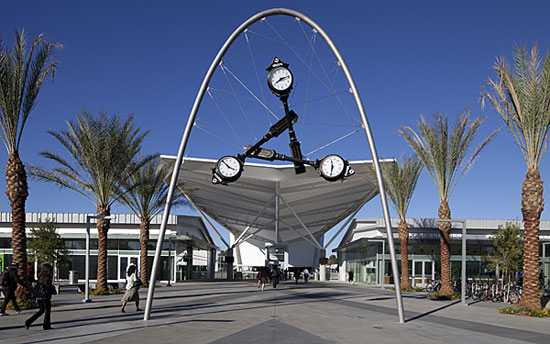
Donald Lipski's "Time Piece," part of Metro's signature art collection, greets bus travelers at the El Monte station.
As art collections go, it’s impressive, from famed sculptor Jonathan Borofsky to activist/artist Judy Baca to renowned Eastside painter Frank Romero.
The catch? You have to be traveling to see it. Oh, and a lot of it is literally underground.
The sprawling exhibition of public art that Metro has built in L.A. County’s subway, bus and commuter rail stations will celebrate its 25th anniversary next year. (Take a virtual tour in our gallery below.)
Launched in 1989 with a half-percent set-aside from rail construction costs, Metro’s award-winning collection of public transit art now encompasses work by some 120 artists in 100 stations, plus posters, photography, poetry and other temporary installations by another 180 artists. Last week, eight California artists were selected to create work for the second phase of the Expo Line, which will run to Santa Monica from the end of the first segment at Culver City.
“Art brings a unique vibrancy and vitality to L.A.’s Metro system,” says Maya Emsden, deputy executive officer for creative services at Metro, who is one of a handful of co-authors on a forthcoming American Public Transportation Association “best practices” paper on integrating art into public transit.
“Art was an integral part of the Metro rail planning process from the very start.”
Metro’s collection kicked off in 1990 with a now-highly-collectible poster by Romero to commemorate the opening of the first Metro rail line. That inaugural artwork, which depicts an old Red Car morphing into the Blue Line as classic cars, blimps and airplanes whiz around it, was followed the next year by “Unity,” a glowing, blue-and-white permanent installation of 82 fiber-optic light panels in the subway tunnel between the Metro Center and Pico Stations by Thomas Eatherton, an artist from Santa Monica.
That piece led in 1993 to a series of now-iconic permanent artworks: Borofsky’s “I Dreamed I Could Fly,” a collection of life-size fiberglass figures suspended from the ceiling of the Civic Center station; Terry Schoonhoven’s Union Station mural of “time-scapes” from Spanish galleons to Carole Lombard, sitting on a suitcase; Joyce Kozloff’s ceramic tile “film strip” murals in the 7th Street/Metro Center station; Stephen Antonakos’ hanging neon artworks at the station below Pershing Square.
Since then, the program has expanded with L.A.’s transit system, says Emsden; the new commissions for Phase 2 of the new Expo Line were selected from some 400 submittals and include such artists as Shizu Saldamando, Abel Alejandre, Susan Logoreci, Nzuji de Magalhaes, Constance Mallinson, Carmen Argote, Judithe Hernandez and Walter Hood.
Though the half-percent of construction costs that L.A. reserves is substantially smaller than transit art set-asides in Boston, New York, Portland, and most other cities with such programs, Metro has been able to stretch its allotment by integrating the artworks as much as possible into the station construction.
“One of the ways we’re able to maximize the limited budget is through early involvement in the project,” says Emsden. “This also ensures important art-related things like lighting are integrated into the station plans.”
The added efficiency of building art into a station, as opposed to going back later and retrofitting, is just one of a number of art lessons Metro has learned in the past 24-plus years. Art program staffers have learned to work closely with architects, engineers and maintenance staff to situate pieces so that maintenance of the art is taken into consideration—a matter that can be trickier in, say, a rail station than in a museum.
“The Borofsky piece, ‘I Dreamed I Could Fly’, is one of my absolute favorites,” says Emsden. “But if we were to do it again we’d make sure the figures, which are actually self-portraits of the artist, were hung in a way that we could lower them for cleaning.” The flying fiberglass figures—like everything else in the stations—get covered over time with magnetic steel transit dust that can only be removed with specialized equipment and cleansers, says Emsden.
“So every five years or so, we get up there and clean them between 2 a.m. and 4 a.m.”
Another lesson: Some kinds of art fare better in transit settings than others.
Eatherton’s 1991 light piece, for instance, has been out of order for about six years, due to the technical challenges of maintaining aging electrical elements in a hard-to-reach space. Part of a Jacqueline Dreager sculpture at the Blue Line’s Wardlow station had to be taken out because it was too close to a landscaping sprinkler and was slowly being decomposed by the water. A set of Gilbert Lujan benches at the Hollywood/Vine station had to be refurbished and then eventually removed altogether because vandals kept tagging and carving their initials into the sculpted bench backs.
However, the vast majority of the Metro projects have fared well, says Emsden, adding that even delicate images have been made transit-worthy by rendering them in materials that are sturdy enough for public artwork.
“We’ve commissioned a couple of artists whose whole body of work is on paper, but there are some amazing artisans in L.A. and elsewhere who can translate those artist’s visions into very durable materials,” says Emsden.
For example, one Canadian studio that specializes in mosaics has made detailed lino-cut prints by Sonia Romero and Daniel Gonzalez, paintings by Samuel Rodriguez and photos by Pitzer College associate art professor Jessica Polzin McCoy into intricate Metro panels made of ceramic tile.
Meanwhile, she says, the program has yielded some pleasant surprises. One was the groundswell of interest among local culture enthusiasts asking to do guided art tours. The result, in 1999, was a Docent Council whose volunteers have introduced more than 30,000 people to the art of the Metro system. Notes Emsden: “We’re the only transit agency with volunteer docents and free Metro art tours.”
Perhaps the nicest surprise, however, has been the way in which some Metro pieces have worked their way, just by word of mouth, into the public imagination. “There’s a light piece by the artist Bill Bell that, if you say a secret word into a tiny hole in the wall at the top of the escalators that go down to the Red and Purple Lines at Union Station, the piece will speak back to you,” Emsden says.
There’s no sign. There are no instructions. The artist, by design, held back the “secret word” (the names of any of the various celebrities depicted, from Rin Tin Tin to Dizzy Gillespie) and left no clue that any extra magic might be found there. “But I can’t tell you how many times I’ve seen someone going past there—a security guard, a commuter, a business person—and saying to the person next to them: ‘You gotta check this out!’ ”
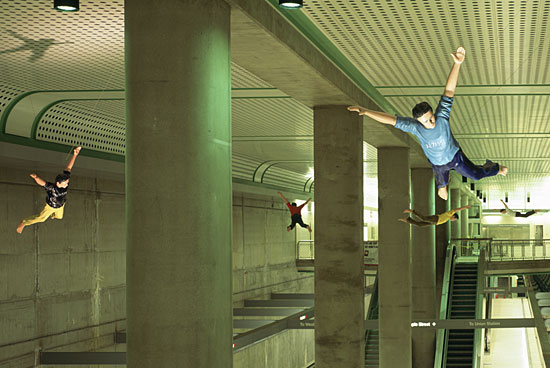
Jonathan Borofsky’s “I Dreamed I Could Fly” is an iconic—though hard to clean—part of the Civic Center Station.
Public art and public transit come together in the following gallery. All images courtesy Metro.
Posted 4/11/13
Dave+Apollo=animal attraction
February 28, 2013
This really is a bird of another feather.
For starters, she’s got a masculine name—Apollo. But that’s nothing compared to this: She’s got a serious turkey vulture crush on a bearded, soft-spoken Los Angeles County worker named Dave Stives.
Stives, the county’s regional animal keeper, has become accustomed to Apollo working herself into a hormonal tizzy when he nears her enclosure at the Placerita Canyon Nature Center in the Antelope Valley, especially during spring mating season. Among other things, she spins in circles and flaunts her tale. “A courtship dance,” says Stives.
Apollo and Stives first met nearly a decade ago. Apollo had been hit by a vehicle in Virginia and was shipped west for treatment at a private facility in the Antelope Valley. A tendon in Apollo’s wing had been damaged, thus bringing her flying days to an end. In those early days, Stives had helped in her care and training. Two years later, when the private facility went under, Apollo was moved to the county’s Placerita Canyon center. It was love at second sight.
“She remembered me and trusted me,” Stives says. That was seven years ago, he says, and the relationship is still going strong. “She follows me around like a puppy dog,” Stives says affectionately of the black-feathered, red-headed vulture.
Stives, 48, has worked as an animal keeper for the county’s Department of Parks and Recreation for some 14 years. He’s responsible for the seven nature centers and parks that house a menagerie of animals, including birds, possums, raccoons, rattlesnakes—“probably anything that is indigenous in the state,” he says. He travels from one facility to the next making sure all are in compliance with state and federal laws governing everything from the diet of the animals to their educational use, a requirement for the county to keep them. “We make sure they have the best possible life under our care,” Stives says.
At home, Stives also has some feathered and furry friends—two dogs, two cats, three falcons, plus a snake. As a “master falconer,” he takes his birds into the wild, where he’s “conditioned” them to circle overhead as he beats the bushes for rabbits. The falcons then swoop in.
As for Apollo, she now spends her weekends with Stives at educational animal shows, dispelling myths of vultures as the creepy outcasts of the bird world. “She’s actually quite pretty,” he says. “In her own way.”
To see the two in their native habitat, click on the video above.
Posted 2/28/13
Meet L.A.’s oldest meteoric stars
February 22, 2013
Last week’s Russian meteor strike may have been astonishing (not to mention hazardous to thousands of Siberians), but great balls of fire can land anywhere—even in greater Los Angeles.
Take the 30-pound Neenach meteorite—4.5 billion years old, give or take a few hundred million—that was turned up by a plow in 1948 by an Antelope Valley rancher. Or the 42-pound Littlerock meteorite, found on a farm in 1979 near Palmdale.
There are even a pair of rare Martian meteorites named for Los Angeles County, though technically the collector who discovered them said he can’t recall precisely where in the Mojave Desert he stumbled across them; the two lava chunks, weighing about a pound and a half-pound, respectively, languished for nearly two decades in a box of loose rocks at his home in Sunland, until he took them in 1999 to UCLA for testing.
Now, a thin slice of “Los Angeles 002,” as the smaller meteorite is now known, is behind glass at the Natural History Museum of Los Angeles County, along with the other aforementioned local examples of primordial stardust.
“Meteorites are hitting the Earth constantly,” notes Alyssa R. Morgan, collections manager in the gems and minerals department of the Natural History Museum.
“Most of them are as tiny as dust or sand grains, but they make the Earth bigger every day.”
Like geologists the world over, Morgan’s mind has been on last Friday’s extraterrestrial fly-by as the museum has braced for Los Angeles’ usual response to meteor-related publicity. The meteorite, which is estimated to have been 55 feet in diameter, rained black and brown fragments for miles across the snow as it streaked across the Ural Mountains, shattering windows and injuring some 1,200 people. Though the bulk of it has yet to be recovered, it is believed to be the largest such object to have hurtled to Earth in more than 100 years.
“Usually after a newsworthy event like the one in Russia, we get lots of calls from people saying, ‘You know, I found this funky rock a while ago and I’ve been meaning to have it tested’,” says Morgan, who has been fascinated by meteorites since her childhood in Seattle, and who studied moon rocks as a graduate student at Brown University. “Ninety-nine times out of 100, they’re not meteorites.
“We have had some real ones come in, though. Last year, a guy who buys storage lockers at auctions brought in a box of rocks so carefully wrapped that he figured the person he’d bought them from had to have been a collector. It turned out he was right, although we never did hear what he decided to do with them.”
Meteorites are meteors—typically asteroids or fragments of asteroids, moons or planets—that have made it through the Earth’s atmosphere and landed.
Some meteorites, Morgan says, are remnants of planets shattered long ago in collisions; others are chunks of existing planets and moons that were chipped at extreme velocity by other meteorites.
No meteorite is believed to have ever killed a human being, though they’ve reportedly landed several times on houses, workplaces and, in at least one verified instance, a doctor’s office in Virginia. In 1911, the famous Nakhla meteorite allegedly killed a dog in Egypt (though that’s been disputed.)
But all meteorites, she says, are time capsules.
“They’re primitive pieces of what everything in our solar system, including our sun, is made of,” says Morgan. “That’s part of why meteorites give us tremendous insight.”
The Natural History Museum’s meteorite collection is modest compared to those, say, at the Smithsonian Institution or the research collection at the Institute of Geophysics and Planetary Physics at UCLA.
Morgan says the NHM collection currently has about 50 specimens. One, a piece of the Argentine Campo del Cielo meteorite, was purchased especially for the new Dinosaur Hall to help illustrate the ongoing debate over whether climate change or a catastrophic meteor strike cleared the way for the age of mammals.
But the most notable other specimens are on display in the museum’s Gem and Mineral Hall. They range from a coin-sized sliver of a rare lunar meteorite found in Libya in the late 1990s to a good-sized hunk of the Canyon Diablo meteorite, which fell in Arizona some 50,000 years ago, creating a massive crater. The latter was instrumental in the determination—by Caltech geochemist Clair Patterson in the 1950s—that the Earth is about 4.55 billion years old.
“Before that work, people knew the Earth was old, but had no way to calculate its age,” says Morgan, running her hand along the big, dark meteorite’s dented surface. “Through this rock, we learned something we now take for granted—how old we are.”
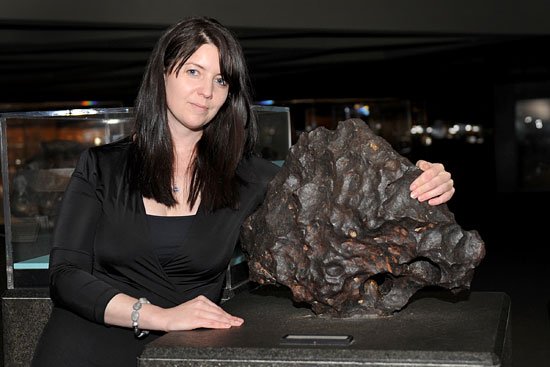
Alyssa Morgan with a chunk of the Canyon Diablo meteorite, which helped scientists determine the Earth
Posted 2/22/13
Getting their just rewards
February 14, 2013
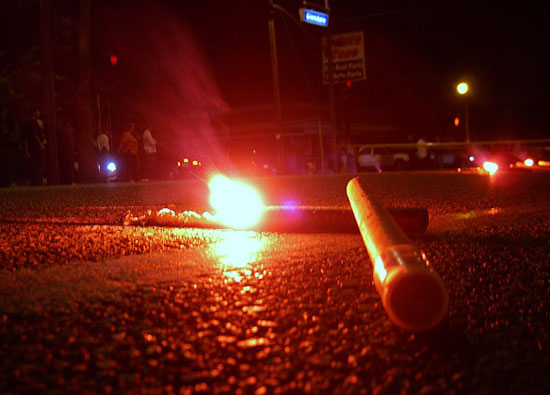
A county reward helped authorities find the Glendale driver in a fatal hit-and-run. Photo/Bryan Frank
Just hours before fugitive ex-cop Christopher Dorner was finally cornered in a hijacked cabin near Big Bear, the Los Angeles County Board of Supervisors had joined the manhunt: On Tuesday morning, it authorized a $100,000 reward for his capture, on top of the $1 million offered in private and public funds by the City of Los Angeles.
Now, with the quadruple murder suspect dead, it’s unclear exactly how—or if—the county’s bounty will be doled out to those who’ll inevitably step forward asserting that their information was crucial in Dorner’s discovery and demise. Ultimately, under county law, a recommendation will be made by representatives of the Chief Executive Office, Sheriff’s Department and Board of Supervisors, whose five members will have the final say.
The Dorner reward made news, of course, because of the international magnitude of the case, upstaging even President Obama’s State of the Union address as the drama came to a fiery conclusion Tuesday evening. But with less fanfare, the county for decades has been offering and paying rewards for information that has helped authorities obtain convictions for crimes ranging from multiple murders, to racially-inspired vandalism to animal cruelty.
During the past five years, the Board of Supervisors has authorized more than 140 reward offers—totaling $1.9 million—on behalf of law enforcement agencies throughout the county. Of those, the county has paid 25 claims worth about $225,000. The biggest payout came last April, when 10 people shared $30,000 for providing information that led to the arrest and conviction of assailants in the so-called “49th Street Massacre.” In that 2006 tragedy, three people, including a 10-year-old boy on a bike, were gunned down in a mistaken identity gang shooting in South Los Angeles.
Over the years, questions have been raised about how crimes are selected for rewards and whether the publicity surrounding a case—or the victim’s race—might unduly tip the scales. In the late 1990s, entertainer Bill Cosby asked that several taxpayer-funded reward offers be rescinded after his son, Ennis, was murdered while changing a tire on a darkened road near Bel Air. The family did not want to make it appear they were getting preferential treatment. Although the state and City of Los Angeles declined Cosby’s request, the Board of Supervisors withdrew its $12,500 reward.
For the most part, however, law enforcement officials dismiss such concerns and criticisms, saying they only seek rewards from the supervisors or other municipal bodies when investigations of particularly heinous crimes go cold and the public remains at risk.
“They are effective, absolutely,” Sheriff’s Department spokesman Steve Whitmore says, although he acknowledges that the offer of money can make investigations more complicated. “A lot of the tips aren’t fruitful,” he says. “But the important thing is that a lot of them are.”
Such was the case for frustrated Glendale Police Department detectives, whose investigation into the hit-and-run death of Elizabeth Sandoval in 2007 was at a standstill. The 24-year-old woman was thrown 100 feet after she was struck by a black Mercedes-Benz as she jaywalked across Glendale Avenue in the darkness of night.
“If the driver could just look into their heart and see that things would be better for him or her if they came forward,” Sandoval’s grief-stricken father pleaded after his daughter’s death. “Just do yourself a favor and turn yourself in,” her brother urged.
But it wasn’t until the Glendale City Council and the L.A. County Board of Supervisors each offered $10,000 in reward money that police got a breakthrough that led to the arrest and conviction of Ara Grigoryan, 23, who, according to the informant, had fled to Mexico.
Without the reward, says Glendale police spokesman Sgt. Tom Lorenz, “it would never have gotten solved.” The informant, he says, “made it very clear to us that she called because there was an offer of a reward…She kept calling back until she got the money.”
Long Beach police officials, meanwhile, credit a $25,000 county reward with helping them crack one their biggest cases in recent years—the 2006 murder of Los Angeles County Deputy Sheriff Maria Cecilia Rosa. She was shot twice just after dawn by robbers while loading bags into her car before heading from Long Beach to her assignment in the county jails. “It was a coldblooded killing,” Sheriff Baca told the media. “Who is truly safe? No one.”
A little more than a month after the reward offer, an informant gave Long Beach police the name of the suspected gunman and arranged a meeting between detectives and another individual who revealed where one suspect was believed to be living. In the end, two men—both of whom were already serving state prison time—were convicted in the deputy’s murder. One was sentenced to death; the other was given 29 years to life.
“The reward prompted an otherwise unwilling witness to come forward and provide information which allowed detectives to focus on a small group of suspects,” says Long Beach police spokesman Sgt. Aaron Eaton.
Long Beach police also benefitted from another reward offered by the county—this one involving the murder of popular honors student Melody Ross, 16, who was hit by gunfire that was sprayed into a group of young people leaving the 2009 Wilson High School homecoming football game. Two witnesses shared the $20,000 reward after giving authorities information that led to the arrest and conviction of two teenaged defendants.
Financial incentives, Easton says, “sometimes mean the difference between making an arrest or the case going unsolved.”
But not always.
The largest county reward anyone can remember—$150,000—was first offered in late 2002, after the death of 15-year-old Brenda Sierra, whose body was found off a mountainous road in San Bernardino County. She died from a blow to the head. The unusually high reward was approved by the board at the request of Supervisor Gloria Molina, whose district includes East Los Angeles, where the teenager lived and was last seen alive.
For nearly a decade, the reward was repeatedly renewed for six-month stretches in the hopes that someone would come forward and bring a measure of closure to the long grieving family. “Until we find her killer, we’re not giving up,” Molina said in announcing the award’s extension in July, 2009.
The reward finally expired in mid-2010, and the case remains unsolved.
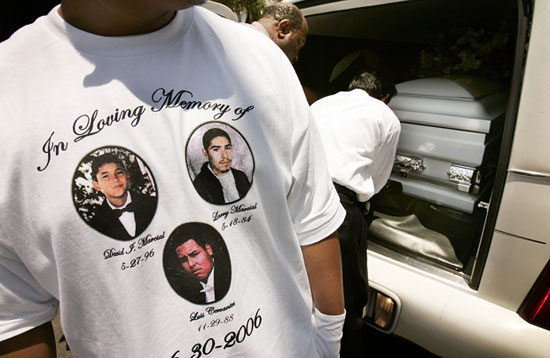
Police got a break in the "49th Street Massacre" case thanks to a $30,000 reward. Photo/Los Angeles Times
Posted 2/14/13




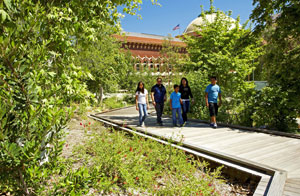
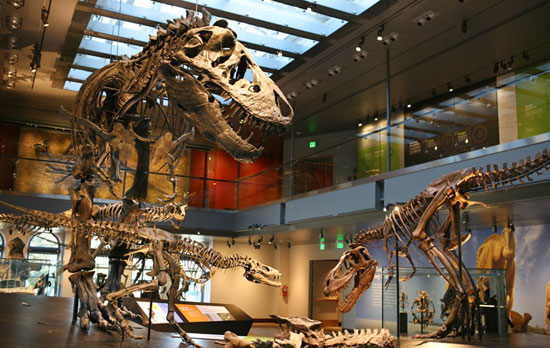
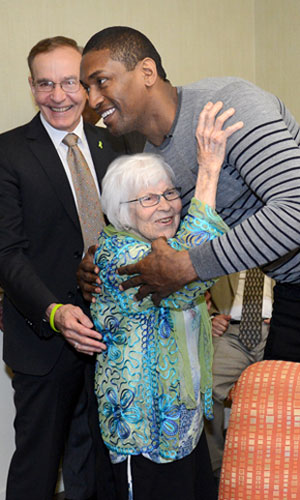
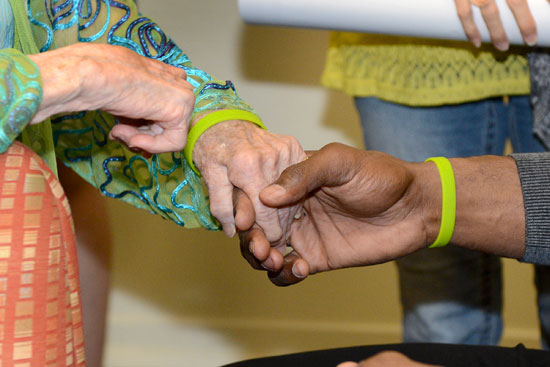
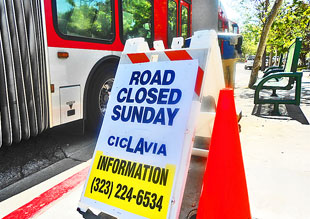
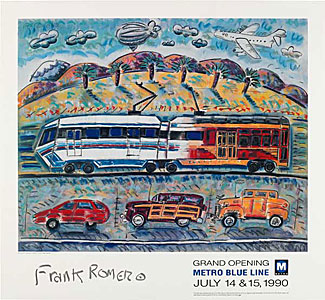










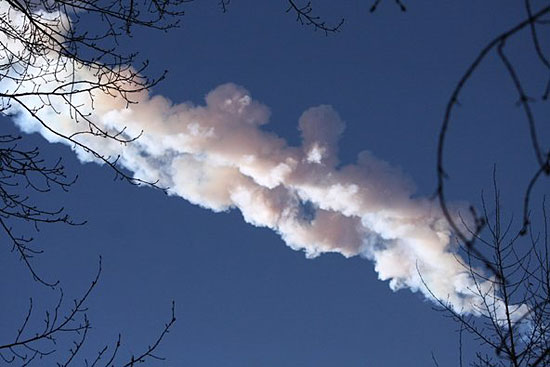
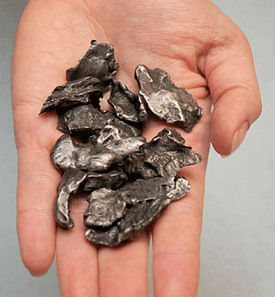
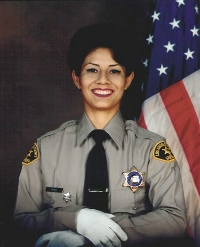





 Check for the latest closure information
Check for the latest closure information








